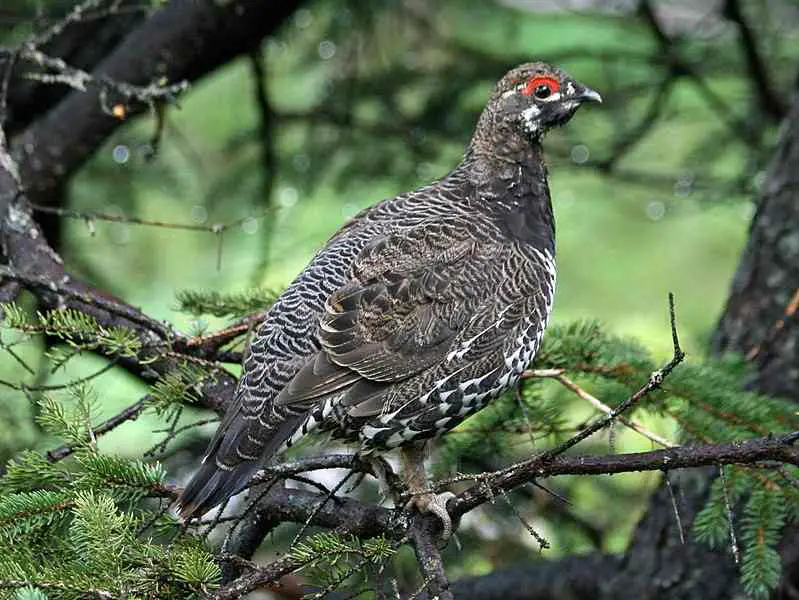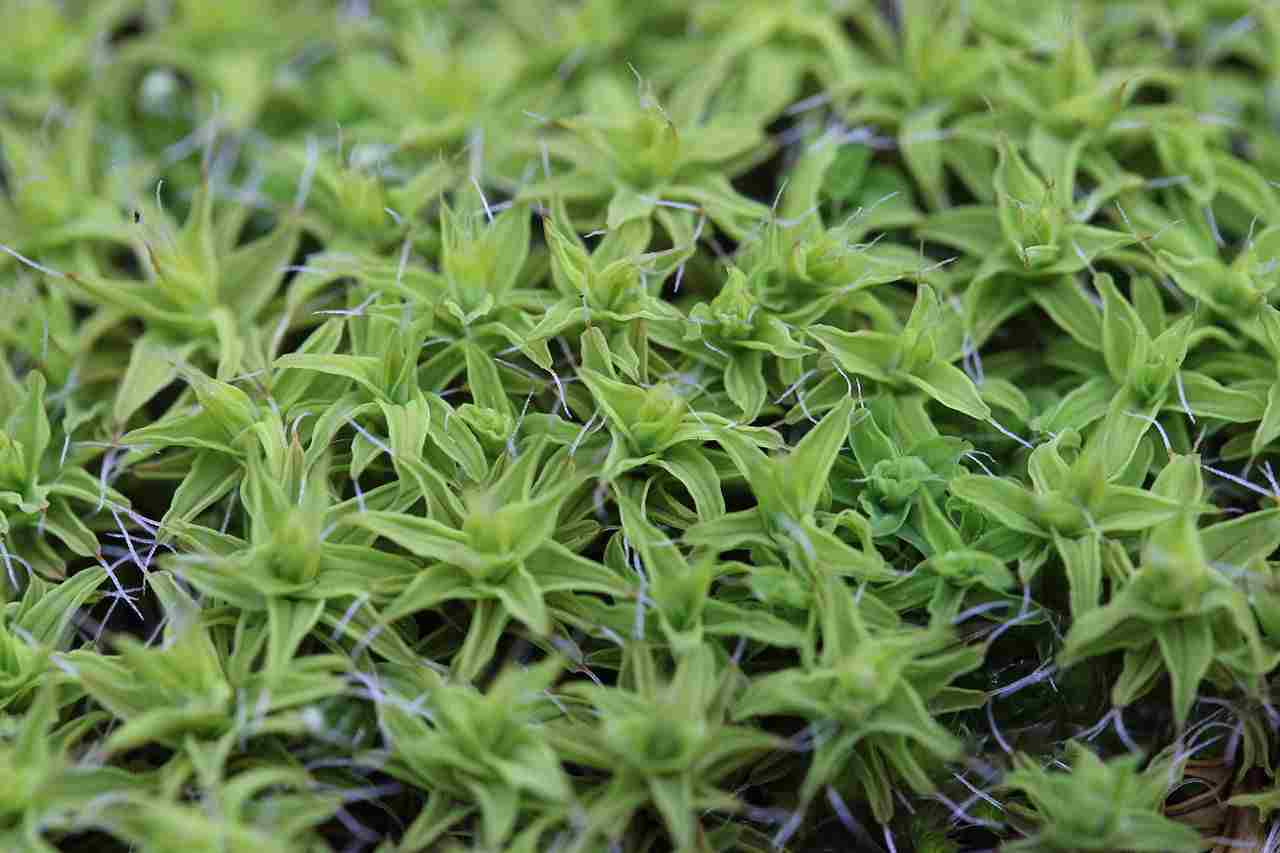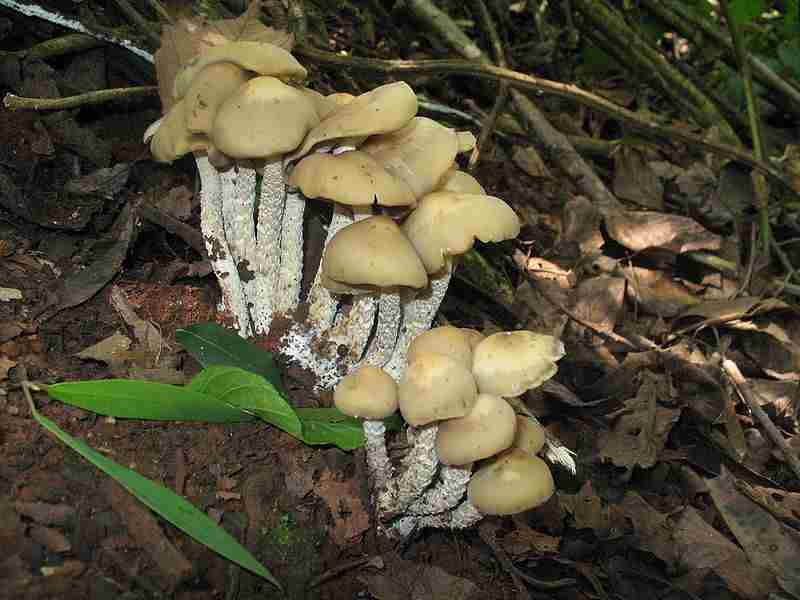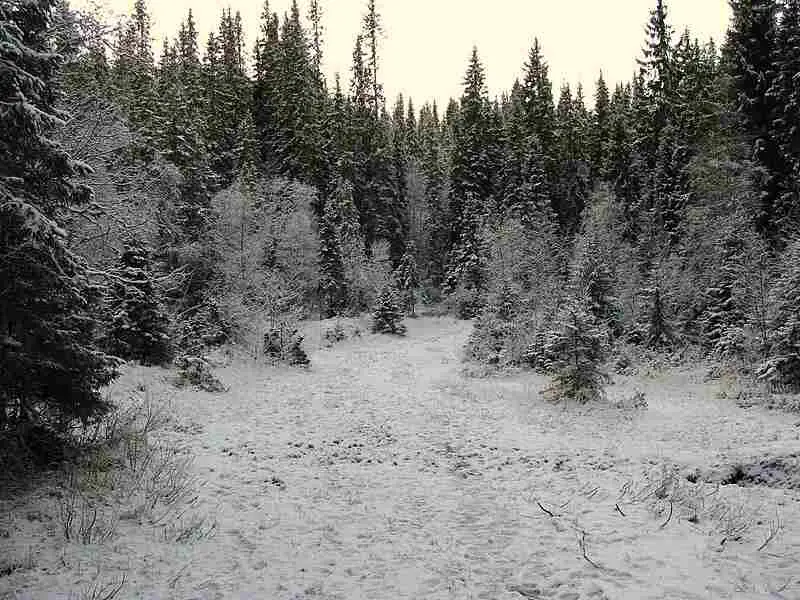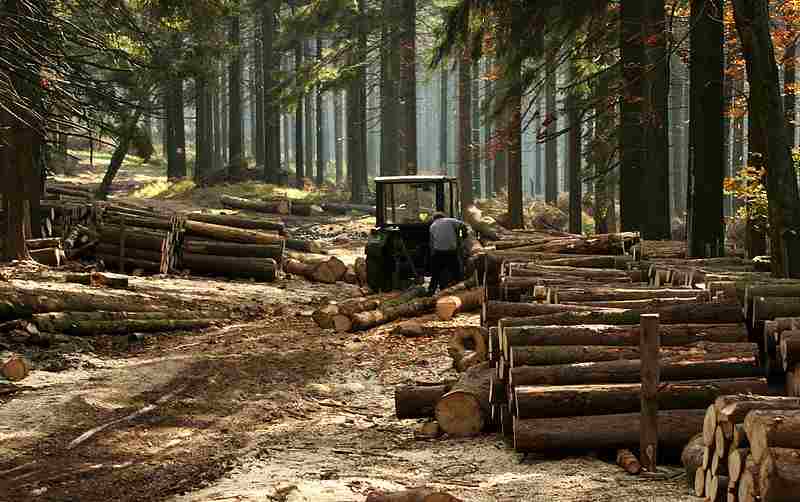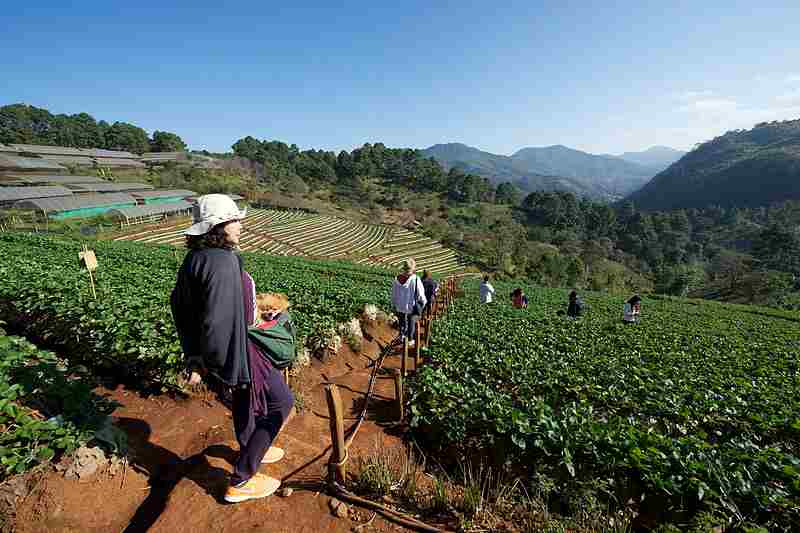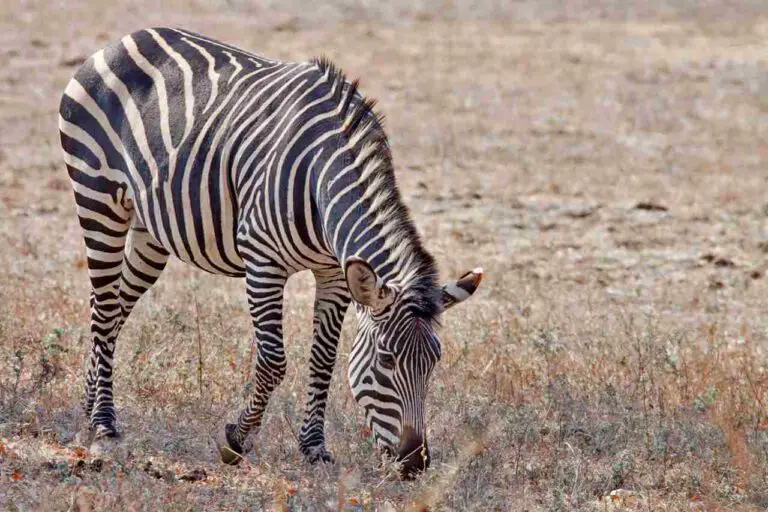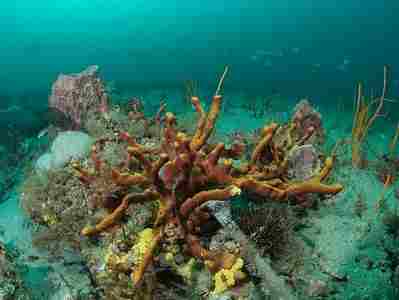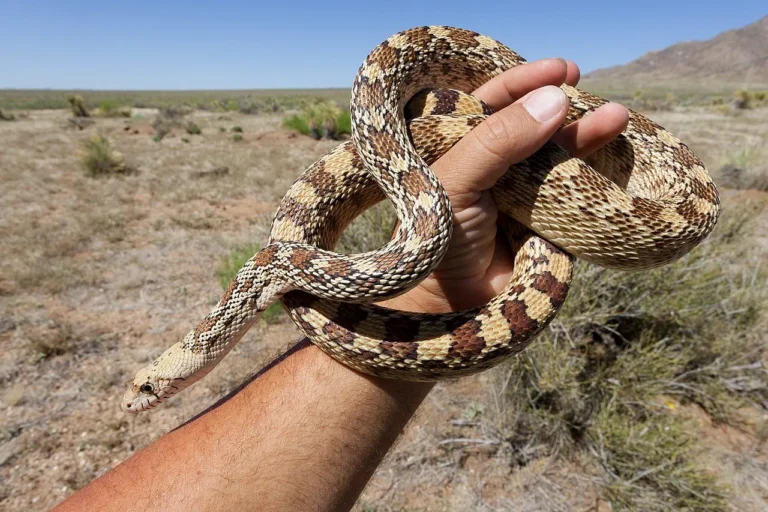5 Biotic Factors in the Taiga and Their Characteristics Discussed
Biotic factors in the taiga or boreal forest are; producers, herbivorous, carnivorous and omnivorous consumers, as well as decomposers.
This article discusses biotic factors in the taiga and their characteristics, as follows;
1). Producers in the Taiga (as one of the Biotic Factors in the Taiga)
Multiple species of producers occur in the taiga/ boreal forest biome.
Generally, these are autotrophic organisms with the ability to produce biomass and energy from abiotic resources like solar radiation, water and carbon dioxide.
Producers in the taiga can be broadly categorized into; coniferous and deciduous trees, shrubs, herbaceous plants, lichens and mosses.
Coniferous trees are the most dominant producers in the taiga, and have characteristic features like evergreen growth, needle-shaped leaves for water conservation and low light-intensity photosynthesis [1]. Examples of coniferous trees are; pine; larch, fir and spruce.
Deciduous trees may occur in the taiga alongside deciduous trees, especially in mixed forests. They include aspen and birch, and are capable of senescence or seasonal leaf-shedding.
Shrubs in the taiga are shorter than trees and therefore dominate the understory layer of the forest structure. They are an important micro-habitat as well as food source for some boreal forest animals. Examples include; willow, cranberry and blueberry.
Boreal herbaceous plants are non-woody plants that tend to grow most rapidly in the brief summer, but are generally adapted to the boreal forest climate. These plants include; sedges, ferns, wildflowers and grasses. They contribute to species-richness/diversity among producers in their environment.
Producers in the boreal forest include both vascular and non-vascular plant categories. Lichens and mosses are non-vascular boreal forest plants that are low-growing and typically occur on the forest floor, where they grow like epiphytes on soil, rocks and tree surfaces.
Functions of producers are essential to the overall forest-function and sustainability. They make the forest a reliable carbon sink through their participation in carbon sequestration and photosynthesis, and are essential to nutrient-recycling in taigas.
2). Herbivorous Consumers in the Taiga
Herbivorous consumers in the taiga are organisms that feed mainly on boreal plants and their products like bark, conifer needles, buds, seeds and fruits.
They occupy trophic level 2 of the taiga food chain, and are crucial to energy transfer across trophic boundaries in the food web of their ecosystem.
Taiga herbivores are well-adapted to the conditions of their terrain. They can be classified as a biotic factor because of their organic origin, and involvement in biological processes.
Examples of taiga herbivores are; rodents like red squirrel and snowshoe hare (Lepus americanus), large ruminants like moose (Alces alces) and caribou (Rangifer tarandus), and birds like the spruce grouse (Falcipennis canadensis).
The snowshoe hare and red squirrel are both small mammals, and survive through adaptive capabilities and behaviors like burrowing and camouflaging. Snowshoe hares are particularly important to the survival of carnivorous and omnivorous consumers like the lynx and coyote, which prey upon them [4].
Food for these rodents includes; twigs, conifer buds and cones, bark, nuts, mushrooms and seeds.
Large ruminants like moose and caribou are also herbivorous and can use a broad range of plant food sources including grasses, mosses, sedges, twigs, bark and leaves.
The spruce grouse is one of several bird species in the taiga that can feed on plant materials like fruits, seeds, buds and conifer needles.

3). Carnivorous Consumers in the Taiga (as one of the Biotic Factors in the Taiga)
Carnivorous consumers are also an essential biotic component of the taiga.
They contribute to the bioenergy-flow dynamic by preying on other animals in their environment.
Like herbivores, the carnivorous consumers have adaptive attributes that enable them survive the harsh climate and often food-deficient conditions of taigas.
Examples of carnivorous consumers in the taiga are; felines like Canada lynx (Lynx canadensis), mustelids like wolverine (Gulo gulo), and raptors like the great horned owl (Bubo virginianus) (as well as canids like gray wolf (Canis lupus)).
The Canada lynx is a medium-sized feline with carnivorous feeding habits, that preys largely on snowshoe hares and similar small mammals.
Wolverines are highly elusive and solitary mammals that are very resilient and adaptive. Their feeding behaviors include scavenging and predation, and their prey choices range from rodents and birds to large mammals.
Great horned owls are one of a handful of carnivorous birds in the taiga.
It has nocturnal habits and is at an advantage for its stealth and keen sensitivity [2]. Prey for this animal includes smaller birds, and rodents.
4). Omnivorous Consumers in the Taiga
Omnivorous consumers the taiga are a group of adaptive organisms that survive by adopting a wide range of potential food sources that include both plant and animal matter.
The diversity of omnivore diet helps these organisms to be ecologically flexible, especially given the relatively-deficient nature of taigas, and their tendency for food-resource depletion in some seasons of the year.
Examples of omnivorous consumers that inhabit the taiga are; red fox (Vulpes vulpes), American black bear (Ursus americanus), and racoon (Procyon lotor).
Red foxes are omnivorous canids that can feed on birds, small mammals, insects, fruits, and carrion [3].
The American black bear often occupies an apex position as a tertiary consumer in its environment. It is an opportunistic feeder and can consume roots, berries, insects, fish, carrion and small mammals.
Racoons are very adaptive and can be found in other terrestrial ecosystems asides the taiga; such as deserts, prairies and temperate forests. Like the bear, racoons are opportunistic in their dietary habits, and may consume nuts, fruits, small mammals, eggs, fish, birds, amphibians, and insects.

5). Decomposers in the Taiga (as one of the Biotic Factors in the Taiga)
Decomposers constitute an important biotic factor in the taiga.
Their relevance comes from being involved in nutrient-cycling through biodegradation of organic matter (from both plants and animals).
Examples of decomposers in the taiga are detrivorous invertebrates like sowbugs and millipedes, fungi and bacteria.
Generally, decomposers derive their nutrients from organic materials which they break down into simpler, absorbable constituents. In the process, these organic resources are re-assimilated into the environment, from which they can be subsequently taken up by plants.
Conclusion
Biotic factors in the taiga are;
1. Producers
2. Herbivorous Consumers
3. Carnivorous Consumers
4. Omnivorous Consumers
5. Decomposers
References
1). Anunciado, M.; Jerez, S. B.; Williams, H.; Bray, J.; Coble, D.; Saito, R. (2019). "Effectiveness of Plant Species for Removing Atmospheric Ammonia." Journal of Agriculture and Environmental Sciences 8(1). Available at: https://doi.org/10.15640/jaes.v8n1a1. (Accessed 6 June 2023).
2). Martin, G. R. (2008). "Sensory capacities and the nocturnal habit of owls (Strigiformes)." Ibis 128(2):266 - 277. Available at: https://doi.org/10.1111/j.1474-919X.1986.tb02674.x. (Accessed 6 2023).
3). Needham, R.; Odden, M.; Lundstadsveen, S. K.; Wegge, P. (2014). "Seasonal diets of red foxes in a boreal forest with a dense population of moose: The importance of winter scavenging." Acta Theriologica 59(3):391–398. Available at: https://doi.org/10.1007/s13364-014-0188-7. (Accessed 6 June 2023).
4). O'Donoghue, M.; Boutin, S. A.; Krebs, C. J.; Zuleta, G. A.; Murray, D.; Hofer, E. (1998). "Functional Responses of Coyotes and Lynx to the Snowshoe Hare Cycle." Ecology 79(4):1193-1208. Available at: https://doi.org/10.2307/176736. (Accessed 6 June 2023).
